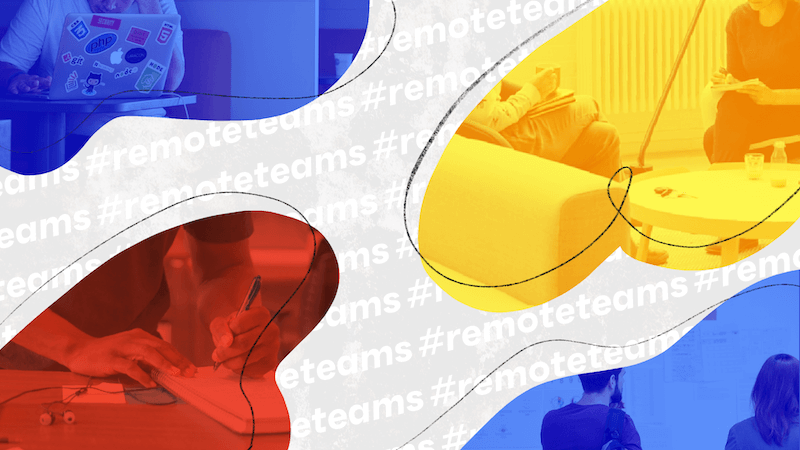Be like a remote team: empower your team to scale productivity
Remote teams have to ditch micro-management practices early on and figure out how to align everyone behind a shared vision.

We (Tability) are a small remote team. By remote, I mean several layers of timezones between us. I live in Sydney, and Bryan is in Portland. Same love for coffee, different temperatures.
Being remote gives us a few advantages:
- Great coverage of our customers.
- Flexible hours and minimum commute (I work from a co-working space, Bryan works from home).
- Long, uninterrupted, blocks of work.
But, being remote also forced us to grow up faster and fix some collaboration issues that you'd generally associate with bigger companies.
The big collaboration problems of small distributed teams
Whether it's on Twitter or in the press, it seems that 2019 is going to be the year of remote teams. And it's not just for startups! Larger organizations are also becoming more and more open to having employees working outside of their headquarters. More than a fad, this is now a convincing perk to attract and retain the best talent in tech.
There's a problem though. The cost of coordination for remote teams is an order of magnitude higher than for people sitting in the same office. A co-located team should be investing the same amount in collaboration, but they can usually do away with it much longer than distributed teams.
- Everyone is in the office at the same time. You can talk to the entire team at once by raising your voice.
- Impromptu meetings can be organized on the spot.
- You can get questions answered right away. Just turn around to your neighbor.
This proximity and availability make it easy to rely on over the shoulder checks (are you done?), rapid interruptions (hey can you check this?) and just-in-time requirements (oh that's not how it's supposed to work...). The alternative is to spend more time up front to explain the problem we need to tackle, outline the expected benefits, define how we'll measure success, and finally prepare the work that needs to be done.
The second approach will yield better results, but the upfront costs are often scary for teams that are already under pressure. So we push back until it becomes apparent that we need to change the way we work to scale.
(Un)fortunately for remote teams, your colleagues are sitting far from you. So you have no choice but to invest in practices that will help everyone on the team to work autonomously while going in the same direction. It's the same type of problem that large organizations are facing when a vision has to be shared by teams that can't meet in person. How can you empower people to move fast in the same direction with low friction?
3 simple steps to switch to an outcome-driven culture and scale execution
The best way to help your organization move faster is by giving everyone the means to understand the impact they can have to take the business where it should be. Instead of giving people projects, you give them goals - they will decide themselves what projects are more suited to deliver the expected outcome.
But turning your culture around can take time and there are a few things to put in place.
Step 1: write everything down, starting with the vision
"If I had more time, I would have written a shorter letter." - Blaise Pascal
It takes efforts to extract one's thoughts and put them down shortly and concisely. And it's not enough to write a few bullet points in a doc. You will need to make sure that everyone has the same understanding of the content, and that all potential questions and doubts have been addressed.
This is going to set the tone for the future - every goal, every initiative that is proposed should relate to that initial vision.
Once that is done you should keep the practice of writing things down, starting by answering a few questions:
- What are we doing?
- Why do we want it?
- Who is it for?
- How will we know it works?
You'll note that there's no when in here, and that's because before deciding if something should be done now or never, you should first have a good understanding of its value. Then, you can move on to evaluating the cost, and only after that will you have enough information to see if it is a good fit for your vision compared to other initiatives that you might have on your list.
Step 2: start measuring success
The second step is to make sure that you have the right tools to know if your projects are successful. It's not enough to look at sales and signups. You need to be able to drill down further to have a deeper understanding of how improvements are affecting the performance of your product.
If you want your team to be able to work better autonomously, you need to provide them with ways to self-evaluate and judge if they are making the right decisions. Do you have tools to:
- Track events in your product?
- Analyze your conversion funnels?
- Get you Net Promoter Score (NPS)?
- Understand retention, churn?
- Know where leads are coming from?
- Track your Monthly Recurring Revenues (MRR), Monthly Active Users (MAUs), Customer Acquisition Cost (CAC)?
This list is not exhaustive and it will vary a lot depending on your product, but that's a good place to start. You absolutely need to be able to give more than revenue targets to your team if you want them to make good decisions.
Step 3: Rely on goals rather than projects
My coding background has trained me to focus on delivering features. I got really good at this, being able to do quick trades in implementation to ship a new improvement in time.
A lot of businesses are organized that way. We define projects and train people to be flexible and find solutions to make sure that deadlines are met. It's very effective, but it puts too much emphasis on outputs (get the project done) and not enough on outcomes (get the expected results). It might look like a subtle difference but you're teaching your organization to innovate on delivering solutions, rather than finding the right problems to solve.
This is why, once you know who to measure success, the final step is to switch to being more driven by outcomes. There are different ways to get there but the path we will explore in future posts will look like this:
- Start by finding the one metric that matter (OMTM) for your business
- Use the SMART template to define underlying goals
- Adopt OKRs to structure your goals and get bottom-up initiatives.
That's it for this introduction. Next, you can check out the 4 stages of goal-tracking outlining the steps to go from 0 to OKRs.
This post has been published on www.productschool.com communities.
Tability is a simple goal-tracking platform for OKRs, KPIs and projects - sign up for free today!

